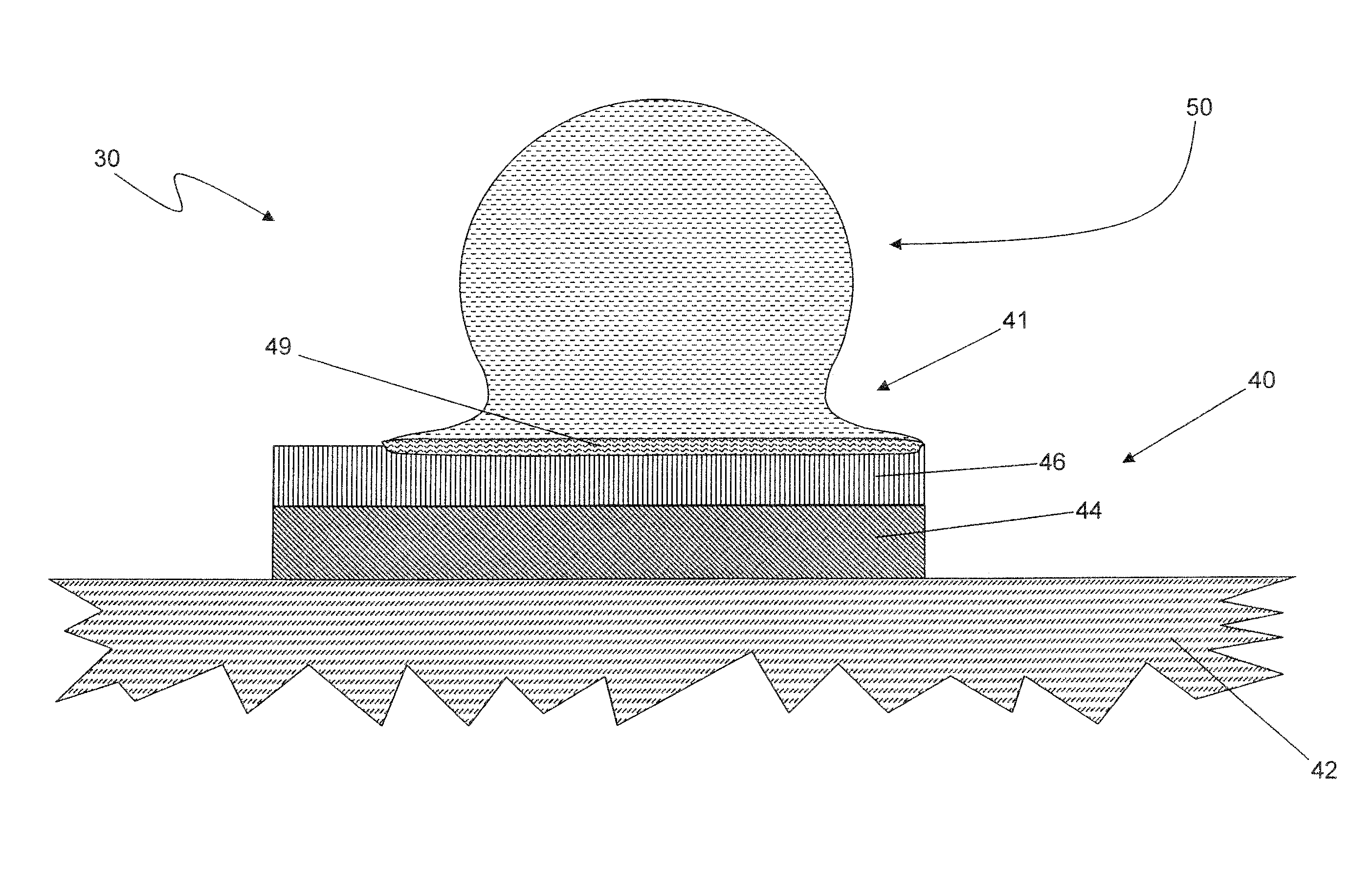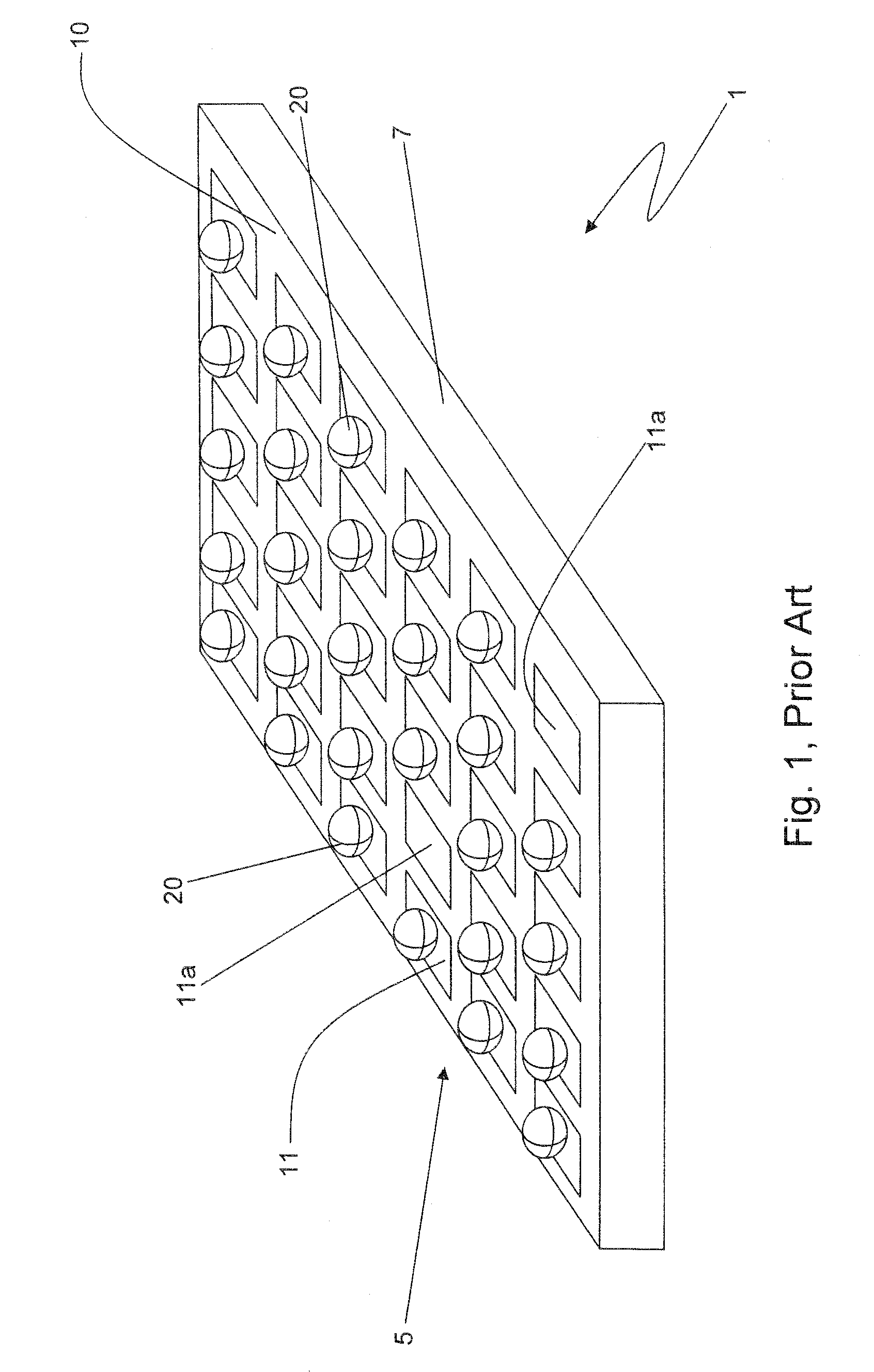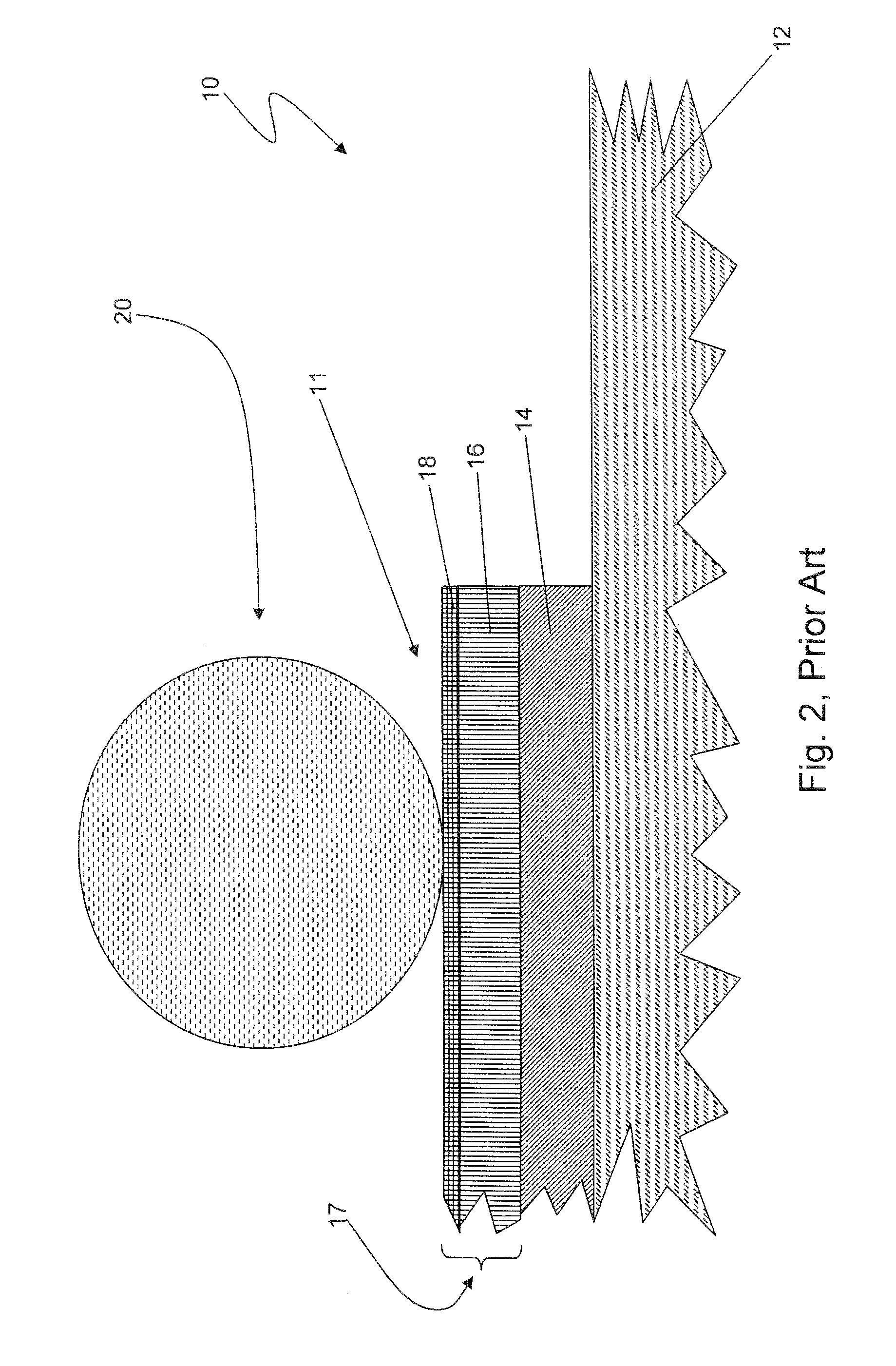Soldering method and related device for improved resistance to brittle fracture with an intermetallic compound region coupling a solder mass to an Ni layer which has a low concentration of P, wherein the amount of P in the underlying Ni layer is controlled as a function of the expected volume of the solder mass
a technology of intermetallic compound and solder mass, which is applied in the direction of soldering apparatus, manufacturing tools, electrical apparatus contruction details, etc., can solve the problems of less prone to brittle failure, limitation of the magnitude of the stress to which the joint can be exposed, and unsatisfactory thermal loading effect, so as to improve the resistance to brittle failure and improve the solder joint
- Summary
- Abstract
- Description
- Claims
- Application Information
AI Technical Summary
Benefits of technology
Problems solved by technology
Method used
Image
Examples
Embodiment Construction
[0027]Soldering methods, and related devices employing solder joints formed according to the soldering methods, are generally described herein. For purposes of the following, an intermetallic compound (IMC) region need not contain only metals, but may also contain other elements in the form of inclusions within the solder itself and within the metal layers with which the solder reacts or contacts. An IMC may be thought of as the reactive region or contact region between the solder and the metal to which the solder binds. Additionally, when a first layer is said to be disposed “over” a second layer or device, it should be understood that the first layer may be disposed on the second layer or device, or may be disposed upon a third layer or layers that are in turned disposed on the second layer or device. The third layer or layers may not be explicitly indicated in the interests of brevity.
[0028]It has been discovered that high strain rate brittle failure occurs in a solder joint with...
PUM
| Property | Measurement | Unit |
|---|---|---|
| thicknesses | aaaaa | aaaaa |
| thicknesses | aaaaa | aaaaa |
| temperature | aaaaa | aaaaa |
Abstract
Description
Claims
Application Information
 Login to View More
Login to View More - R&D
- Intellectual Property
- Life Sciences
- Materials
- Tech Scout
- Unparalleled Data Quality
- Higher Quality Content
- 60% Fewer Hallucinations
Browse by: Latest US Patents, China's latest patents, Technical Efficacy Thesaurus, Application Domain, Technology Topic, Popular Technical Reports.
© 2025 PatSnap. All rights reserved.Legal|Privacy policy|Modern Slavery Act Transparency Statement|Sitemap|About US| Contact US: help@patsnap.com



